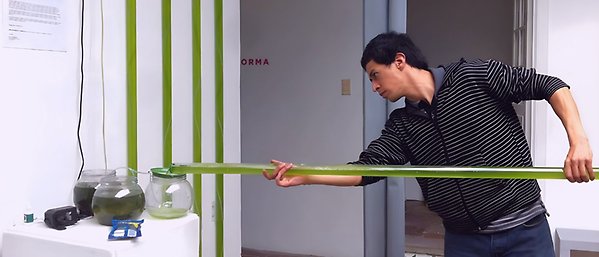INDUSTRY TRANSFORMATION
Six targets for a sustainable textile industry
Combining circular economy and planetary boundaries can pave the way for a sustainable transformation of the fashion industry
- The fashion and textiles industry urgently needs to embark on a profound transformation taking a planetary perspective
- The industry must widen its scope of action on multiple planetary pressures throughout its whole value chain
- A circular economy that uses the science on planetary boundaries is key to success
LOOKING GOOD AND GREEN: Combining the principles of circular economy with clear science-based priorities derived from the planetary boundaries can create a firm foundation for a sustainable transformation of the fashion and textiles industry.
This is the message of a new report from The Sustainable Textiles Project Pdf, 2.9 MB., a three-year science-business collaboration. The research was led by the Stockholm Resilience Centre at Stockholm University, informed by the Ellen MacArthur Foundation’s work, and funded by H&M Group.
Pdf, 2.9 MB., a three-year science-business collaboration. The research was led by the Stockholm Resilience Centre at Stockholm University, informed by the Ellen MacArthur Foundation’s work, and funded by H&M Group.
The fashion and textiles industry could play a vital role in helping societies to shift from extractive, wasteful and risk-multiplying value chains to circular business ecosystems that can adapt resiliently to today’s realities.
Sarah Cornell, lead author
Constraint on growth
The fashion and textiles industry urgently needs to take a planetary perspective. The industry is so large that it is becoming an important factor shaping the state of the planet.
Too often it contributes to unwanted social and environmental harms. As planetary pressures mount, the industry itself is also exposed to rising systemic risks.
Tackling these challenges and ensuring the world is fit to hand over to future generations means embarking on an industry-wide transformation so profound that it reshapes the entire business ecosystem.
“The industry knows that Earth’s capacity to produce raw materials and assimilate polluting emissions can become a constraint on its growth,” says Tiina Häyhä, the Stockholm Resilience Centre’s theme leader on Anthropocene dynamics who was also a lead author on the report.
"Restorative and regenerative circular economy principles can be key to promoting such a profound sustainability transformation," Häyhä explains.

The fashion and textiles industry by numbers
Piecemeal efforts
Industry-wide priorities and action targets derived from the science on planetary boundaries can be instrumental in steering this development in the right direction according to the new report.
“The fashion and textiles industry already takes action on several sustainability challenges – but efforts are often piecemeal,” says report author Celinda Palm, whose doctoral research has been central to the project.
“Strategic science-based coordination of action can cover all planetary priorities and help prevent efforts in one area undermining progress on the others.”
Overall, the report identifies three major ways that the circular economy and planetary boundaries approaches complement and support each other:
- Circular economy aims to be regenerative – planetary boundaries explain what needs to be regenerated
- Circular economy calls for ‘closing the loop’ of linear value chains – planetary boundaries indicate what changes are needed and how efforts add up
- Circular economy means rethinking of waste as resources – planetary boundaries track Earth’s capacity to provide natural resources and absorb waste and pollution
Six planetary priorities and targets
The fashion and textiles industry is putting increasing pressure on all the planetary boundaries, creating tightly linked social and ecological challenges along increasingly complex value chains.
For six of the nine planetary boundaries, worldwide pressures are already acute and current trends intensify the risks.
The industry’s land and water use, and its waste flows of pollutants and the nutrient elements nitrogen and phosphorus all contribute to unprecedented threats to climate and biodiversity, the core planetary boundaries that together define Earth system conditions.
Based on this understanding, the report suggests six targets for the fashion and textiles industry to pursue this decade:
- Cut carbon dioxide emissions by 8% or more per year, aiming for carbon neutrality by 2050
- Halt net loss of habitats and even reverse biodiversity losses, aiming for the textiles industry to contribute to protection of 30% of the planet
- Minimize land use change, halt deforestation and triple climate-smart agriculture, aiming for the textile industry to contribute to restoring 20% of the world’s land area
- Reduce freshwater consumptive use by 30%, with the textile industry aiming to maintain total freshwater withdrawals below 40% of renewable supplies in all watersheds
- Transitioning to more circular management of plant nutrients and complying with national air and water quality policies all along the supply chain, aiming for the textile industry to contribute to improving nutrient use efficiency by 50%
- Prevent the release of harmful chemical substances and halve the use of pesticides, aiming for fully circular and restorative production system
Download the report from The Sustainable Textiles Project Pdf, 2.9 MB.
Pdf, 2.9 MB.

Cornell, Häyhä and Palm. 2021. A sustainable and resilient circular textiles and fashion industry: towards a circular economy that respects and responds to planetary priorities. A Research Report by Stockholm University’s Stockholm Resilience Centre for the Ellen MacArthur Foundation and H&M Group.
Download the report here Pdf, 2.9 MB.
Pdf, 2.9 MB.
For more information about the report, contact Sarah Cornell









